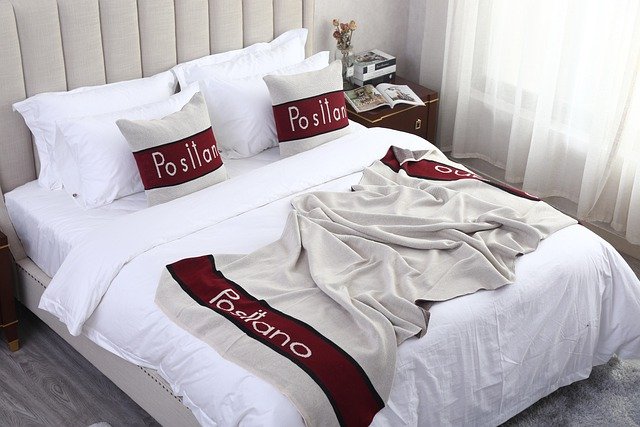Decluttering Methods to Promote Relaxation and Better Sleep
A calm, uncluttered bedroom supports relaxation and restorative sleep by reducing visual and mental distractions. This article outlines practical decluttering strategies that address storage, layout, lighting, acoustics, textiles, airquality, and ergonomics to create a more comfortable, sustainable sleep environment tailored to circadian and comfort needs.

A well-ordered sleeping space reduces cognitive load and sensory distractions, helping the mind settle at night. Practical decluttering focuses on reducing visible items, optimizing storage and layout, and choosing materials and textiles that support comfort and temperature regulation. By considering lighting, acoustics, ventilation, and airquality alongside furniture and ergonomics, you can create a bedroom that aligns with circadian rhythms and promotes restful sleep without excessive expense or waste.
This article is for informational purposes only and should not be considered medical advice. Please consult a qualified healthcare professional for personalized guidance and treatment.
How does layout and furniture affect sleep?
The arrangement of furniture and the ergonomics of key pieces influence comfort and perceived order. Position your bed to allow easy access on both sides and to create clear sightlines, reducing feelings of crowding. Choose furniture with simple profiles and built-in storage where possible to limit excess pieces. Consider ergonomics for bedtime routines: a nightstand at reachable height, lighting controls within arm’s reach, and pathways free of obstruction. A coherent layout reduces visual clutter and supports temperature control by allowing airflow around the bed.
How can storage and organization reduce stress?
Effective storage and clear organization prevent surfaces from accumulating items that act as visual reminders of tasks. Use closed storage—dressers, under-bed drawers, or bins—to keep frequently used items accessible but out of sight. Implement simple habits like a nightly five-minute reset: put clothes away, clear surfaces, and return books to a dedicated shelf. Minimalism in possessions helps, but sustainability matters too: prioritize multiuse storage and donate or recycle items you no longer need. Consistent organization lowers pre-sleep rumination and supports a calmer mindset.
What role do lighting and circadian cues play?
Lighting directly affects circadian signaling and the transition to sleep. Declutter lighting zones by limiting bright overhead fixtures for evening use and integrating dimmable lamps or warm-toned bulbs to reduce blue light exposure. Keep lamp switches accessible so you can lower illumination without searching through clutter. Consider blackout curtains or adjustable shades to manage morning light for consistent sleep-wake timing. Thoughtful lighting organization—separate task, ambient, and accent lighting—helps the brain recognize bedtime cues.
How do acoustics and materials impact relaxation?
Exposed clutter and hard surfaces can increase reverberation and auditory distraction. Soft textiles—rugs, curtains, upholstered headboards—absorb sound and create a quieter environment. Select materials that balance performance and sustainability: natural fiber rugs and recycled textile curtains can improve acoustics while minimizing environmental impact. If noise is a persistent issue, streamline wall and floor clutter that reflects sound and add soft furnishings near noise sources. Reduced acoustic distraction makes it easier to fall and remain asleep.
How can ventilation and airquality support sleep?
Good ventilation and clean air support comfort and physiological readiness for sleep. Decluttering windowsills and vents ensures unobstructed airflow and makes maintenance—dusting, filter changes—easier. Houseplants can help with perceived airquality but should be chosen for low allergen potential and placed where they won’t collect clutter. Avoid storing chemicals or strong-scented products in the bedroom that can affect breathing or temperature perception. Maintaining comfortable temperature and fresh air is central to sustained sleep quality.
Which textiles, color, and materials improve comfort?
Textiles and color choices shape relief and visual calm. Neutral or muted color palettes reduce visual stimulation, while layered bedding with breathable materials—cotton, linen, or sustainable blends—helps regulate temperature. Decluttered surfaces highlight preferred textures, so choose a few high-quality textiles rather than many mismatched items. Materials should be durable and easy to clean to avoid dust buildup. Prioritizing comfort and simplicity in textiles and colors supports both relaxation and sustainable habits.
Decluttering for better sleep is a holistic process that balances organization, ergonomics, and sensory management. Focus on creating unobstructed pathways, accessible storage, layered lighting that supports circadian cues, sound-absorbing soft materials, and clean airflow. Small, consistent habits—regular resets, thoughtful donations, and selective purchasing—can maintain order without excessive effort. Over time, a calmer physical environment can reduce pre-sleep stress and support more restorative rest.





